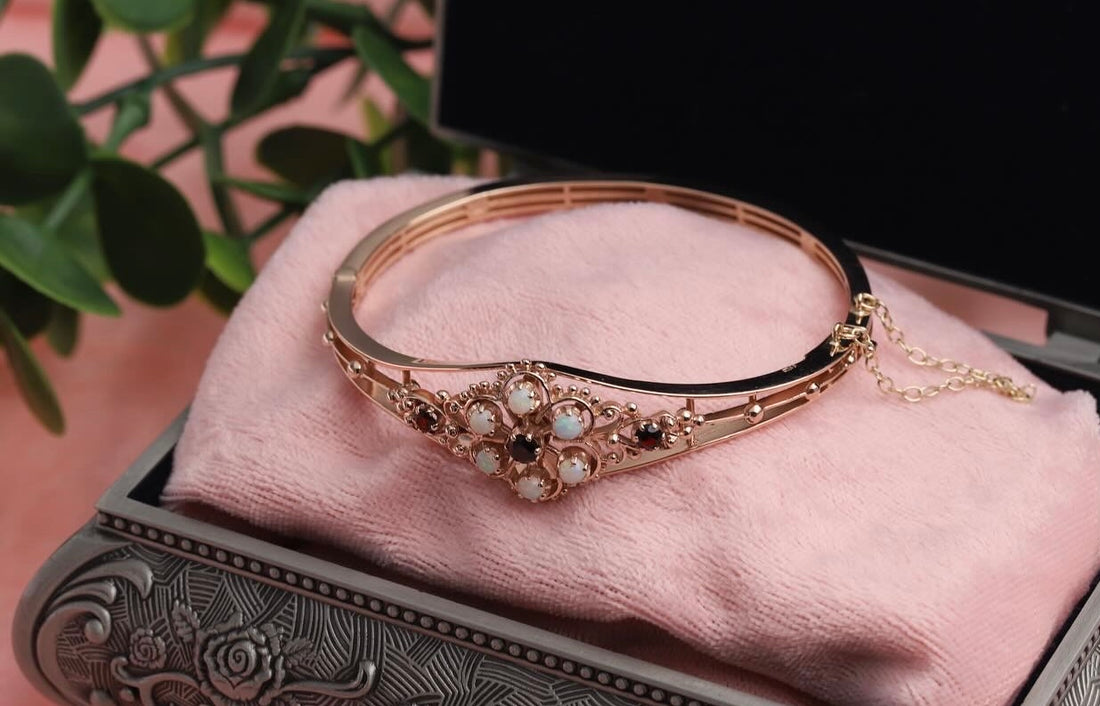
Victorian Jewellery Part I: An Introduction to the Victorian Era of Jewellery
The Timeless Charm of Victorian Jewellery: Influence on Modern Day Designs
Introduction
Victorian jewellery, known for its intricate designs and symbolic meanings, has left an indelible mark on the jewellery industry. This post will focus on giving a brief overview of the Victorian Era of Jewellery making, including significant changes in the trends and fashion of the times.
A Glimpse into the Victorian Era of Jewellery
Historical Context
Era Overview: The Victorian era, spanning from 1837 to 1901, marked the reign of Queen Victoria, one of Britain's most iconic and influential monarchs. This period witnessed significant changes in society, culture, and the arts, all of which left a lasting impact on the world of jewellery. Queen Victoria’s reign, often divided into three distinct periods – the Early, Mid, and Late Victorian periods – saw the evolution of jewellery styles that reflected the broader societal shifts and personal milestones in her life.
Cultural Impact: Queen Victoria’s profound personal influence on jewellery styles during her reign cannot be overstated. Her preferences and life events were mirrored in the jewellery trends of the time, creating a legacy that endures even in modern designs.
- Early Victorian Period (1837-1860): The Romantic Era
- Nature and Sentimentality: During this period, jewellery designs were heavily inspired by nature and romantic themes. Pieces often featured flowers, leaves, and serpents, symbolising eternal love and loyalty. Queen Victoria’s love for her husband, Prince Albert, inspired much of the era’s jewellery, including engagement rings with serpentine motifs, representing eternal love.
- Innovative Techniques: The early Victorian era saw the introduction of new techniques such as repoussé (a method of embossing metal) and the use of coloured gemstones like amethysts, garnets, and turquoise to create vibrant, romantic pieces.
- Mid-Victorian Period (1860-1885): The Grand Era
- Mourning Jewellery: The death of Prince Albert in 1861 deeply affected Queen Victoria and led to a long period of mourning, which influenced the jewellery of the time. Mourning jewellery, characterised by its sombre, dark appearance, became popular. Materials like jet, onyx, and black enamel were commonly used, often adorned with motifs like weeping willows, urns, and portraits of the deceased.
- Exotic Influences: The mid-Victorian era also saw an increased interest in exotic and archaeological motifs, influenced by the British Empire’s expansion and discoveries in Egypt and other ancient cultures. Jewellery featured intricate designs and unusual materials, such as coral, tortoiseshell, and ivory.
- Late Victorian Period (1885-1901): The Aesthetic Era
- Lightness and Whimsy: As the era progressed, there was a shift towards lighter, more whimsical designs. The late Victorian period, also known as the Aesthetic period, favoured delicate and intricate jewellery, with a focus on artistic expression and beauty for beauty’s sake. Designs often included crescent moons, stars, hearts, and bows, reflecting a more playful and feminine aesthetic.
- Advances in Craftsmanship: Technological advancements during the Industrial Revolution allowed for more intricate and precise craftsmanship. Techniques such as millegrain (a decorative beading technique) and pavé setting (closely set small gemstones) became popular, adding a new level of detail and refinement to jewellery pieces.
Queen Victoria’s personal milestones and changing tastes throughout her life had a direct and lasting impact on the jewellery styles of the time. Her influence extended beyond Britain, setting trends that were emulated across Europe and America. The Victorian era’s rich and diverse jewellery heritage continues to inspire contemporary designers, reflecting the timeless allure and sentimental value of pieces created during this remarkable period in history.
By understanding the historical context and cultural impact of the Victorian era, we gain a deeper appreciation for the intricate beauty and enduring legacy of Victorian jewellery. Whether through romantic motifs, sombre mourning pieces, or whimsical designs, Victorian jewellery remains a testament to the era’s unique blend of sentimentality, craftsmanship, and artistic innovation.
In the next post, we will explore the craftsmanship and techniques used to create these fantastic pieces of jewellery, as well as singling out some famous examples of Victorian Pieces.





